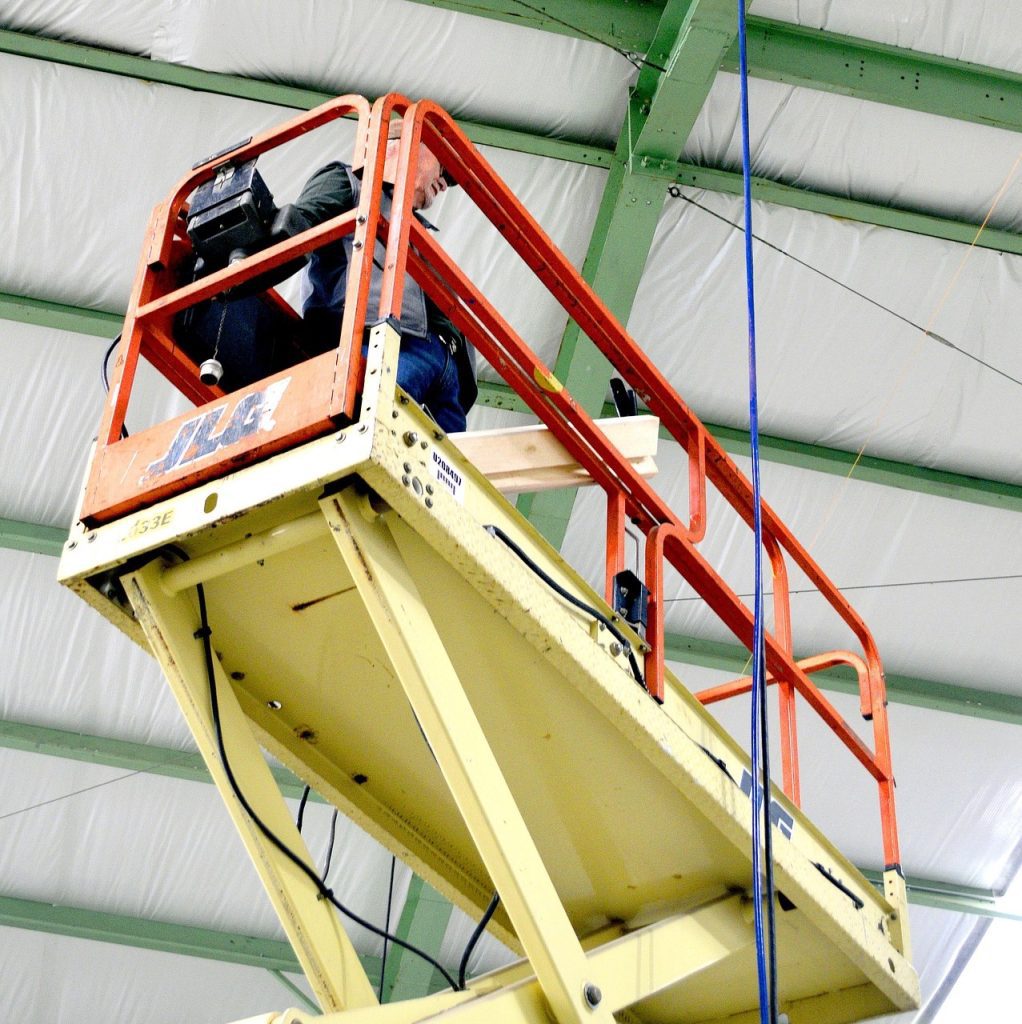OSHA Aerial Lift Hands-On Evaluation: Step-by-Step Guide for Safe Operation at Height
OSHA Aerial Lift Hands-On Evaluation: A Simple Guide for Safe and Compliant Operation
Do your aerial lift operators know how to work safely at height?
OSHA requires more than just classroom training. Operators of boom lifts, scissor lifts, and other mobile elevated work platforms (MEWPs) must also prove they can safely use the equipment on the job. This is done through a hands-on evaluation, as required under OSHA 29 CFR 1910.178 and relevant construction standards.
In this guide, we’ll explain:
- What an aerial lift hands-on evaluation is
- Who is allowed to perform it
- The step-by-step process for evaluation
- What real-world hazards to include
- When operators need to be re-evaluated
- What to document and how to stay compliant
- Common myths and FAQs
What Is an Aerial Lift Hands-On Evaluation — and Why Is It Required?
A hands-on evaluation is a real-world safety test. It shows that an operator can:
- Set up and operate the lift safely
- Use fall protection properly
- Maneuver around hazards at height
- Follow emergency procedures
It’s not enough to pass a written test. OSHA requires that operators also demonstrate their skills with the actual equipment.
What Does OSHA Mean by “Hands-On” or “Practical” Evaluation?
The evaluation must take place:
- At the worksite or a controlled environment
- Using the same type of aerial lift the operator will use on the job
The evaluator observes the operator performing tasks such as:
- Pre-operation inspection
- Safe platform entry and exit
- Raising, lowering, and moving the lift
- Using harnesses and fall arrest gear
- Navigating near overhead hazards
- Performing an emergency descent (if applicable)
Why Hands-On Evaluations Matter
Aerial lift accidents can be deadly. Falls, tip-overs, and electrocutions are among the most common causes of serious injury. A hands-on evaluation helps:
- Catch unsafe habits early
- Reinforce training
- Keep workers safe while working at height
- Reduce liability for your company
- Show OSHA you’re compliant with regulations
What OSHA Rules Require This?
For general industry, 29 CFR 1910.178(l) covers training and evaluation for powered industrial trucks, including aerial lifts when applicable.
For construction work, OSHA 1926.453 requires that aerial lift operators be trained and evaluated on:
- Equipment operation
- Fall protection use
- Hazard recognition
- Safe work practices
Both standards require hands-on evaluations to confirm operator competence.
Who Can Perform the Evaluation?
Only a competent person can evaluate aerial lift operators.
That means someone who:
- Has training and experience with aerial lifts
- Knows OSHA rules and lift-specific hazards
- Can spot unsafe behavior
- Has the authority to evaluate and retrain as needed
This can be a supervisor, safety coordinator, or a designated evaluator within the company.
How to Conduct an Aerial Lift Hands-On Evaluation (Step-by-Step)
1. Review the Operator’s Training
Make sure the operator:
- Has completed formal classroom or online instruction
- Understands basic safety and fall protection rules
2. Inspect the Equipment
Ensure the lift is safe to use:
- Tires, controls, guardrails, warning systems, outriggers, battery/fuel status
- Ensure fall protection anchorage points are in place and labeled
3. Observe Operator Performance
Have the operator complete key tasks:
- Pre-operation inspection
- Proper use of harness and lanyard
- Safe platform entry and exit
- Raising and lowering while maintaining control
- Operating near structures or obstacles
- Demonstrating awareness of overhead power lines or ceilings
- Performing an emergency descent (if possible)
4. Use a Checklist to Score Performance
Use a standard evaluation form to rate:
- Safe use of controls
- Correct use of PPE
- Spatial awareness
- Smooth operation
- Communication and emergency response
5. Give Feedback
Immediately review:
- What they did right
- What needs improvement
- If they passed or need more training
6. Document the Evaluation
Sign and date the form. Keep it on file to prove the operator was properly evaluated.
What Real-World Factors Should Be Included?
Make sure your evaluation reflects your jobsite. Test under conditions that operators will face, such as:
- Uneven or sloped ground
- Tight working areas
- Wind, weather, or low visibility
- Working near walls, pipes, or steel structures
- Electrical hazards (overhead power lines)
- Required fall protection setups
This ensures that operators are ready for real working conditions—not just training environments.
Aerial Lift Hazards to Evaluate
| Hazard | What to Evaluate |
|---|---|
| Falls from elevation | Use of harness, lanyard, and anchor point |
| Tip-overs or instability | Platform movement, speed control, and setup |
| Electrocution | Distance from power lines or electrical gear |
| Obstructed clearance | Awareness of beams, pipes, or ceilings |
| Emergency situations | Knowledge of descent procedures or cutoffs |
What to Include in Your Evaluation Documentation
Each operator’s file should contain:
- Operator’s full name
- Date of evaluation
- Type of aerial lift used
- Evaluator’s name and qualifications
- Checklist or scoring form
- Notes on performance
- Any retraining assigned
- Final pass/fail result
Keep this documentation on file and available during audits or inspections.
How Often Must Operators Be Evaluated?
OSHA requires that hands-on evaluations be conducted:
- Before the operator uses the lift independently
- At least every 3 years
- Any time the operator is involved in an accident, near miss, or observed using the lift unsafely
- When assigned to a different type of aerial lift
Frequently Asked Questions
Do Aerial Lift Operators Need Hands-On Training?
Yes. OSHA requires both formal instruction and a practical evaluation to confirm real-world safety skills.
Does OSHA Require a Written Test Too?
Yes. The full training program includes:
- Classroom (or online) instruction
- Written or oral test
- Hands-on evaluation
Who Can Be a Competent Person for Aerial Lift Evaluations?
Someone with:
- Experience using aerial lifts
- Knowledge of OSHA safety standards
- The ability to recognize hazards
- Authority to approve or require retraining
Can We Use Technology for the Evaluation?
Yes—technology can help:
- Use digital checklists or tablets for scoring
- Store evaluation records securely
- Use video for review (where permitted)
Just remember, the evaluation must still happen in person and on-site.
What Happens If We Don’t Evaluate Operators?
Skipping evaluations can lead to:
- OSHA citations and fines
- Increased injury risk
- Legal liability for unsafe practices
- Equipment damage
- Loss of trust among your team
What’s the Best Way to Give Feedback?
- Be direct and respectful
- Focus on actions, not the person
- Offer specific examples of good and unsafe behavior
- Write down any required retraining
- Encourage questions and improvement
How Do We Prepare for an OSHA Inspection?
- Keep all evaluation forms organized
- Make sure every aerial lift operator has a completed file
- Conduct internal audits regularly
- Document retraining and incident follow-ups
- Stay current with OSHA changes
Final Reminder: Hands-on evaluations save lives. They are more than just an OSHA requirement—they’re how you ensure your aerial lift operators are ready to work safely at height, every day.

